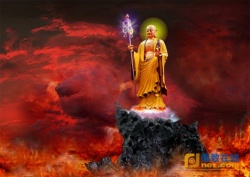Dojo (daochang)
Dojo (daochang); Dojo is the Japanese term for a place of practice. in Buddhism this usually refers to a meditation room or, on a larger scale, an entire temple or monastery.
The term is also used by martial arts disciplines such as judo to mean the place of practice or instruction.
Dojo is pronounced daochang in Chinese, and from this we see it is composed of the term DAo plus "chang," meaning place, hence "a place of the Way."
The Chinese word daochang was also used to translate the Sanskrit term bodhimandala, or "truth-plot."
A daochang is thus a sacred place, one used for teaching, worship, or ritual, which is therefore also the original sense of dojo.
A daochang may also refer to the entire field of the Dao.
It also refers to a Buddha’s or bodhisattva’s field of influence. In this sense Amitabha’s field of influence, for instance, is the Western Paradise, and Vairocana Buddha’s field of influence is the transcendent or the universe.
A bodhisattva’s field of Dao is, properly speaking, the world of sentient beings, since every bodhisattva makes the Mahayana vow not to move to nirvana until all suffering beings in samsara are freed of suffering.
In some Chinese texts daochang is used to indicate the place where Buddha attained enlightenment, or Bodhgaya, or the bodhi (pipal) tree under which he attained enlightenment.
In very early Buddhist art, the Buddha himself was not depicted, and the tree stood as a symbol of the Buddha, his promise of enlightenment, and his power—in a word, his daochang.
Source
http://what-when-how.com/buddhism/dharmaguptaka-school-to-dong-zhongshu-tung-chung-shu-buddhism/
